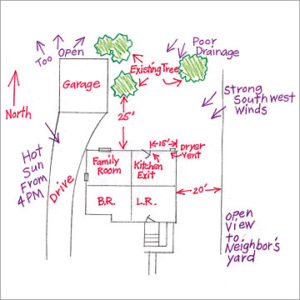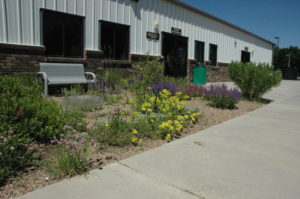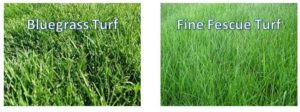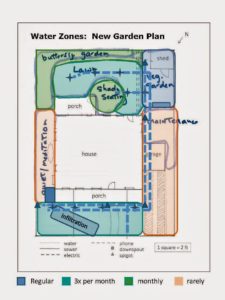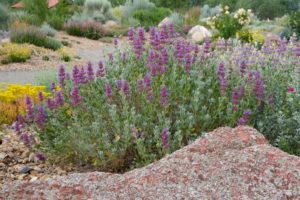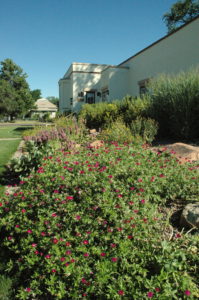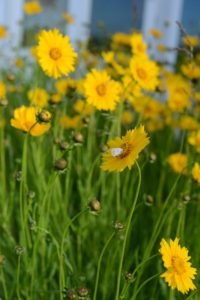
Gardening in the Golden Plains Area has many unique challenges most notably weather extremes and nutrient deficient soils. Despite this, it is possible to create beautiful, bountiful, and sustainable gardens in this part of the state.
Sustainability goes hand-in-hand with maintaining a healthy ecosystem. This will be good for the garden as a whole supporting a wide range of organisms. For example, a variety of nectary plants blooming throughout the season will benefit insects such as butterflies, bees and other arthropods.
The CSU Extension staff have come together to provide well-researched and tested advice on how to accomplish a sustainable garden through the set of key principles below. Select any of the principles to find in-depth information on each of these concepts.
A successful sustainable garden begins by developing a plan. Start by drawing a simple sketch of the area to be landscaped with all the factors that will impact that area including:
- Existing hardscapes such as buildings, walkways, drives, utilities, and fences – anything that is permanent and immovable.
- Indicate any common or shared areas.
- Show water spigots, well heads, and roof overhangs.
- Indicate views from windows with arrows
- Locate existing landscaping like trees, shrubs and planting beds.
- Rough distances between the hardscapes and existing landscape features.
- Indicate environmental factors such as prevailing wind direction, the sunniest locations, the shadiest locations, and any areas that are irrigated or not.
- Pub. 7.243 Sustainable Landscaping
Adequate natural moisture is one of the biggest considerations when gardening in the Golden Plains Area. On average, the region receives 17″ annual precipitation. Many plants, especially turf grasses, require regular irrigation in order to thrive here. All is not lost though, wise plant selection along with techniques developed for low or no irrigated gardening can result in success.
First, create planting zones by grouping plants by their need. Sustainable garden techniques would advise three main plant groupings:
- Plants with moderate water needs or that will need irrigation
- Plants that are drought tolerant
- Plants once established require no supplemental water (xeric)
Second, determine any turf areas noting that turf grass has certain maintenance requirements including regular irrigation in order to thrive in our region. Keep in mind minimizing turf grass areas is a sustainable practice and if you do choose to create turf grass areas warm season varieties require more water than cool season varieties.
Third, create an efficient irrigation plan for all the planting zones. There are many resources available to help you including:
- Online tutorials
- Local library
- Pub. 7.239 Maintaining a Home Irrigation System
Plants cannot thrive without the right soil conditions.

Examples of soil types.
Soil management is knowing the overall condition of your soil, it’s makeup, rate of water infiltration or lack of, it’s pH (whether it tends to be acidic or alkaline), and nutrient content (nitrogen, potassium, phosphorus, and trace minerals). Other important factors of soil condition are compaction or salts.
First, your soil makeup can easily be determined by conducting a Jar Test. This test should be done for each of the planned garden areas.
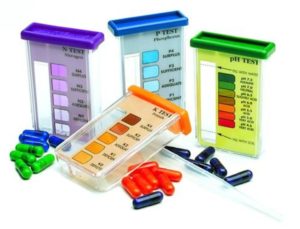
Example of a home soil testing kit.
Next, to understand thoroughly your soil’s nutrient levels and pH, testing should be done. A home soils testing kit will give you a rough idea of the pH and nutrient levels. Sending a sample off to a soil testing lab will provide the best information and will include an interpretation of that data. Most soils in Colorado, according the CSU Extension research, are neutral or slightly alkaline pH.
Lastly, depending on soil makeup, nutrient levels, and pH, and the types of plants you would like to grow in your garden, soil amendments might be needed.
| Plant Group | Soil Amendment Needed | Notes |
|---|---|---|
| Native | No | |
| Vegetables | Yes, in most cases. | Each type of vegetable has different needs. Seek out information on that specific type. |
| Bedding Plants | Yes, in most cases. | Each type of bedding plant has different needs. Seek out information on that specific type. |
| Fruiting Plants | Yes, in most cases. | Each type of fruiting plant has different needs. Seek out information on that specific type. |
| Shrubs and Trees | Yes, in most cases. | Each type of shrub and tree has different needs. Seek out information on that specific type. |
Plant management means understanding what plants are appropriate for your site. And having a plan, going through the steps above, will help guide you in selecting the best plants for this plan.
The plan you developed would have mapped out the environmental factors or extremes that will have an effect on the success of the plants you choose. Those extremes can include areas of full sun or shade, along with areas exposed to extreme winds.
- Full Sun: An area that is in the sun all day, such as a western exposure, will suffer greater temperature swings and rapid drying of the soils. Native and xeric plants, once established, will do well in areas of western exposure.
- Wind: Areas on your site that have exposure to strong winds from the northwest are considered an area with extreme conditions. Winds can dry and erode soils, and can damage tender plants.
- Shade: Structures, fences, walls, and existing landscaping can create shade on your site. When developing your plan check these areas at different times of the day to determine whether those areas are full shade or only partial shade.
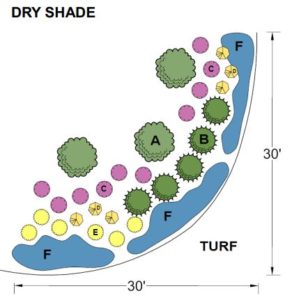
- Altitude and Humidity: The Golden Plains area varies in altitude from 3,000 feet up to 5,500 feet above sea level and is considered a semi-arid or low humidity environment.
- Hardiness: The USDA Hardiness Zone Map is one of the best ways to find out which plants will thrive in your location. Here is the Hardiness Zone Map for Colorado. Determining which zone you are located will aid you in plant selection. For example, areas of eastern Kit Carson county are in Zone 6a which has an average annual minimum winter temperature between 5 and 10 below. Gardeners in this area need to select plants that can tolerate such low temperatures.
Despite all of these considerations, there is still a vast array of plants available for creating lovely, sustainable gardens on the plains.


